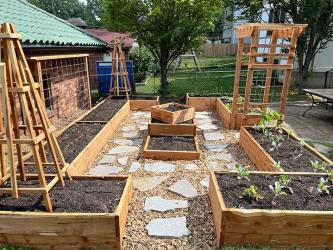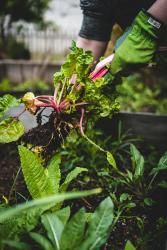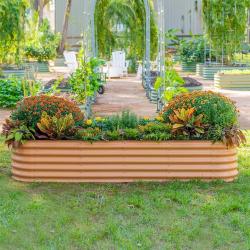If you’re a gardener looking for a change, consider upgrading your garden with a raised bed. These above-ground planters help separate your garden from the rest of your yard and can add dimension to otherwise flat areas. Some standard items needed to start include soil, wood or the material you plan to use to create the raised bed, a shovel and a tiller.
Raised Ground Beds
The most basic of the raised bed styles, these beds only require additional soil and some manual labor. Start by piling soil on top of your predetermined area until it is about 6-8 inches high. From there, gently till the pile to combine the new dirt with the pre-existing soil, making sure to maintain the shape of the bed. Once you have everything where you like it, there’s no need to till again! Simply avoid stepping on the raised bed and make sure to keep the mound in-tact while gardening.
Containerized Raised Beds
For those living in high-traffic areas (near sidewalks, schools, close to neighbors, etc.), containerized beds offer convenience and protection. Typically made out of metal or wood and sitting 1-2 ft. off the ground. The additional height also offers additional accessibility making it easier for those requiring wheelchairs to reach their garden. An important item to remember when considering a containerized raised bed is that containers do require extra watering compared to other garden styles.
Supported Raised Beds
Supported raised beds take a little bit from both ground beds and containerized beds. These raised beds are typically on the ground, similar to ground beds, but are surrounded by an outer structure for support. These structures can be made from wood, metal, bricks or other materials found around the house. When creating these beds, determine where you’d like your garden to be and then pile your dirt into a mound shape. Then setup your frame and till the soil into place. One benefit of a supported raised bed is that the base of the bed can be wider than 5 ft., compared to ground beds that can’t exceed more than a 5 ft. width.
Elevated Planting
Once your raised beds are setup, it’s time to plant your garden! Most plants do well in this type of environment. Strawberries, lettuce, tomatoes and cucumbers are examples of plants that thrive in raised beds. If you’re planning on growing potatoes, broccoli, squash or blueberries, it’s best to avoid raised beds. This is because these fruits and vegetables either grow too large to be contained in a smaller space or grow best when planted in the ground.
Raised beds create a container for brining in clean, well-drained soil. So much of the soil around our homes is super compacted, stripped of fertile topsoil or may contain lead contamination. Raised beds create a container to bring in new fertile soil to mitigate those challenges.
Note: We advocate putting raised beds directly on the earth over containers, which have no contact with the earth. This allows for a much deeper root zone as well as biological contact with a myriad of beneficial microbes that live in the soil. — Matt Lebon, owner of Custom Foodscaping and The Foodscaper.











